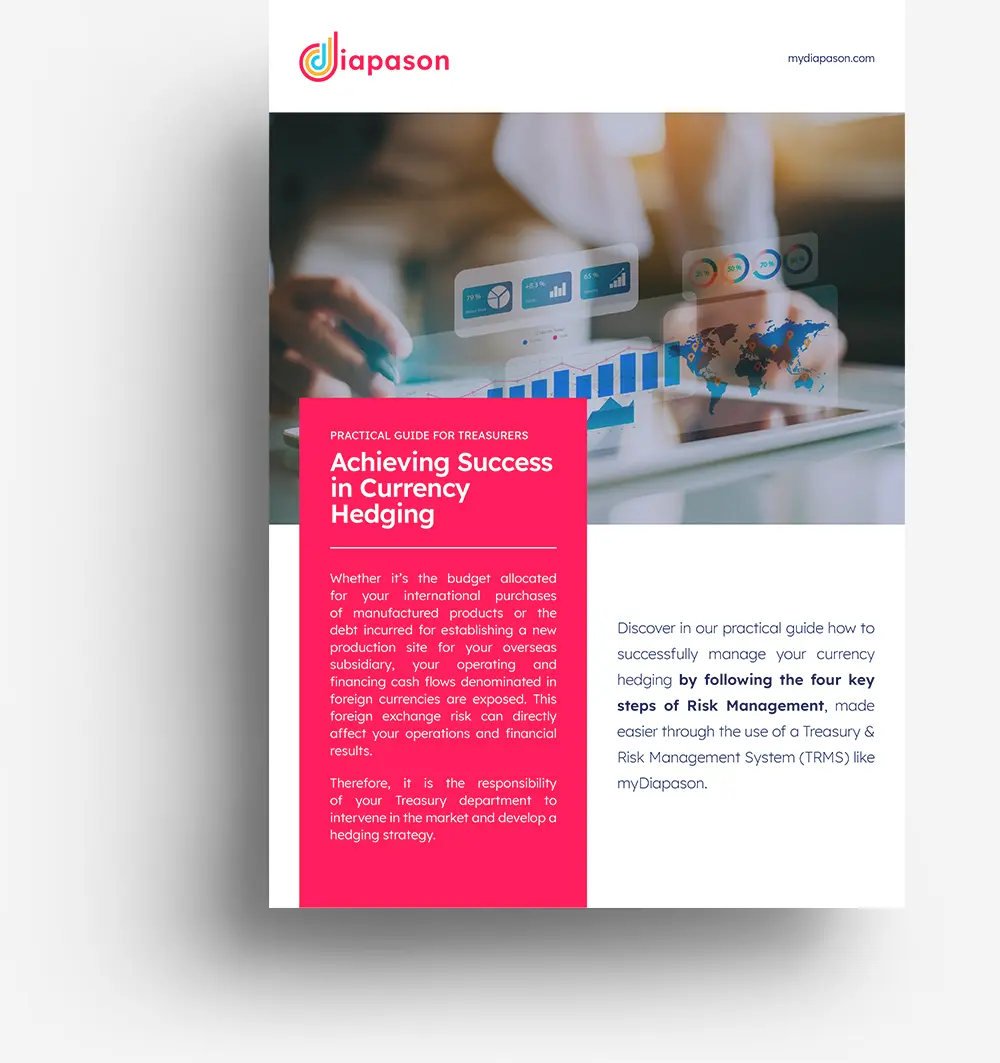
What is Financial Risk Management and How to Manage It?
Financial risk management has become essential for companies seeking to improve their performance, involving the identification and prior analysis of all investment decisions. What is risk management in finance? What innovative strategies do companies use to reduce their risks and protect their finances?
What is Financial Risk Management?
Financial risk management is a core process where a company or organization identifies, evaluates, and takes steps to anticipate and mitigate risks related to exchange rates, interest rates, or operational activities that could impact its finances. This process involves the preliminary analysis of all investment decisions before implementation and taking corrective actions for existing financial issues. In other words, it is both a proactive approach to anticipate and avoid financial risks and a reactive response to effectively manage difficult financial situations. A treasury management software can be a valuable tool in this process, enabling more efficient financial flow management and better liquidity forecasting.
What are the Different Categories of Financial Risks?
Understanding the nature and differences of each financial risk is crucial. There are five main types of financial risks:
- Exchange rate risk
- Interest rate risk
- Payment fraud risk
- Counterparty or credit risk
- Liquidity risk
Here is what you need to know about each type of risks:
Exchange Rate Risk
Exchange rate risk is a major concern for companies with financial transactions involving foreign currencies. These companies are exposed to fluctuations in exchange rates, meaning the value of their assets, liabilities, income, and expenses can vary depending on currency movements. This risk occurs when changes in exchange rates between currencies can adversely affect a company’s finances.
Interest Rate Risk
Interest rate risk can significantly impact a company’s financial health. On one hand, if a company holds investments financed by adjustable-rate loans, an increase in interest rates can reduce the value of these investments, resulting in a capital loss for the company.
On the other hand, if the company has taken out variable-rate loans, a rise in interest rates can increase financing costs, leading to higher loan repayments and straining the company’s cash flow.
Payment Fraud Risk
Payment fraud involves using fraudulent methods to obtain money or goods through financial transactions, such as embezzlement or identity theft. It exposes companies to direct financial losses, reputational damage, high recovery costs, and operational disruptions.
Counterparty or Credit Risk
Counterparty risk arises when a company’s partners or suppliers fail to meet their contractual obligations, honor financial commitments, or adhere to agreed contract terms. This can result in financial losses, project delays, reduced product or service quality, and even legal disputes.
Liquidity Risk
Liquidity risk occurs when companies face difficulties in quickly and efficiently converting assets into cash. This can happen when product or service sales are slower than expected, leading to a lack of liquidity to fund projects, reward employees, or support company growth. Consequently, companies may struggle to meet short-term financial obligations.
How to Identify and Measure Financial Risks?
Identifying and measuring financial risks involves several key steps, requiring appropriate tools and methods.
First, identify the various sources of financial risks to which a company is exposed, using analytical techniques and evaluating the financial products involved. Then, assess these risks in terms of probability of occurrence and potential impact on the company’s finances, using quantitative or qualitative methods.
Measure the risks to quantify their financial impact, with tools like Value at Risk (VaR) or mathematical models. Finally, make informed risk management decisions using the information provided by the identification and evaluation process.
Continuous monitoring and management of financial risks can be facilitated by using a financial risk management software, allowing regular surveillance and adaptation of management strategies based on the evolving financial context.
How to Reduce Financial Risk in the Company: The Process
To mitigate financial risks and ensure company stability, several preventive actions can be implemented:
- Map risks: Identify and list all potential financial risks by consulting stakeholders and analyzing the company’s ecosystem.
- Analyze risks: Assess the level and nature of each risk based on their probability and impact, classifying them accordingly.
- Prevent risks: Implement appropriate prevention and control measures to reduce the occurrence or impact of identified risks by strengthening the company’s internal control system and monitoring market developments.
- Use derivatives: Protect against market risks by considering derivatives such as futures contracts, swaps, or futures based on the company’s specific needs.
- Utilize insurance: Prevent counterparty risks by using insurance, relying on open data or services from economic intelligence companies or credit insurers.
- Conduct internal audits: Regularly perform internal audits to assess operational risk coverage and quickly take corrective measures if necessary.
- Manage cash flow: Use treasury management software to optimize financial flow management, cash flow forecasting, and cash flow management, ensuring that resources and operating flows are sufficient to meet the company’s working capital needs.
Who is Involved in Risk Management in the Company?
Dans la gestion des risques au sein d’une entreprise, divers métiers collaborent pour identifier, évaluer et gérer les risques. Le Directeur Financement et Trésorerie est chargé de superviser diverses fonctions financières, notamment la collecte de fonds, la gestion des liquidités, l’optimisation du capital et la gestion des risques financiers. En collaboration étroite avec le risk manager, les analystes financiers, les auditeurs internes, les contrôleurs de gestion, les juristes d’entreprise, et d’autres parties prenantes, il veille à assurer la santé financière de l’entreprise et à garantir une utilisation efficace des ressources financières.
In corporate risk management, various roles collaborate to identify, evaluate, and manage risks. The Finance and Treasury Director oversees several financial functions, including fundraising, liquidity management, capital optimization, and financial risk management. Working closely with the risk manager, financial analysts, internal auditors, management controllers, corporate lawyers, and other stakeholders, they ensure the company’s financial health and efficient use of financial resources.
About the Author
Valérie Lafaury, Chief Marketing Officer
Valérie is the Chief Marketing Officer (CMO) of Diapason, the solution that streamlines corporate treasury management. She crafts press releases, in-depth articles, and timely pieces on topics related to the treasurer’s profession. Her goal is to provide treasurers with useful and practical information to optimize their treasury management.







